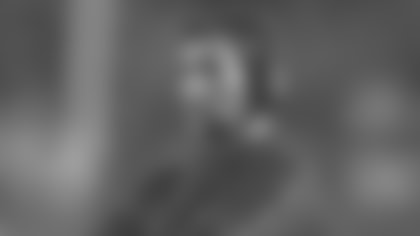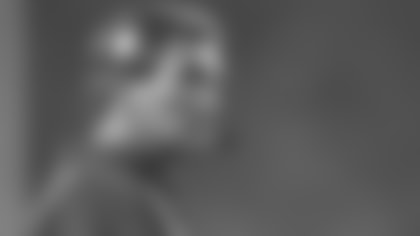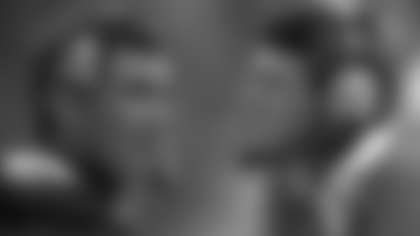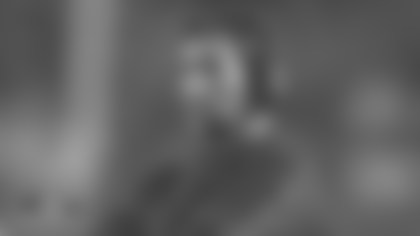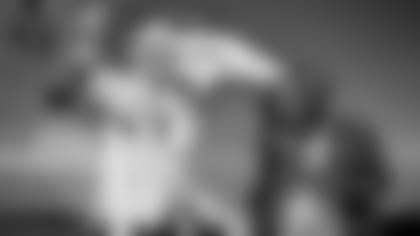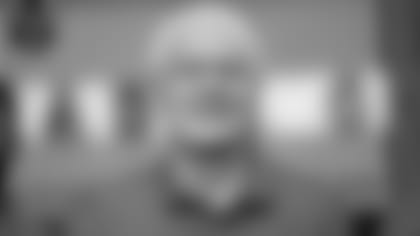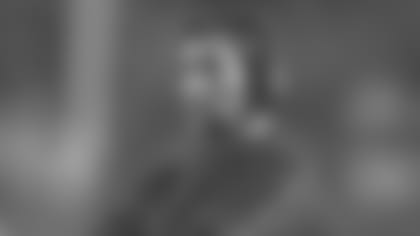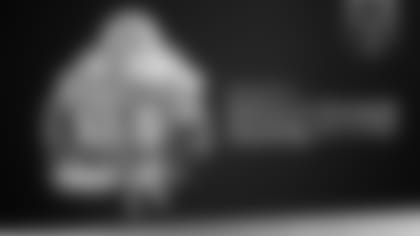The Broncos trio of Steve Atwater, Peyton Manning, John Lynch and Steve Atwater are one step closer to being enshrined into the Pro Football Hall of Fame, as they received their gold jackers on Friday.
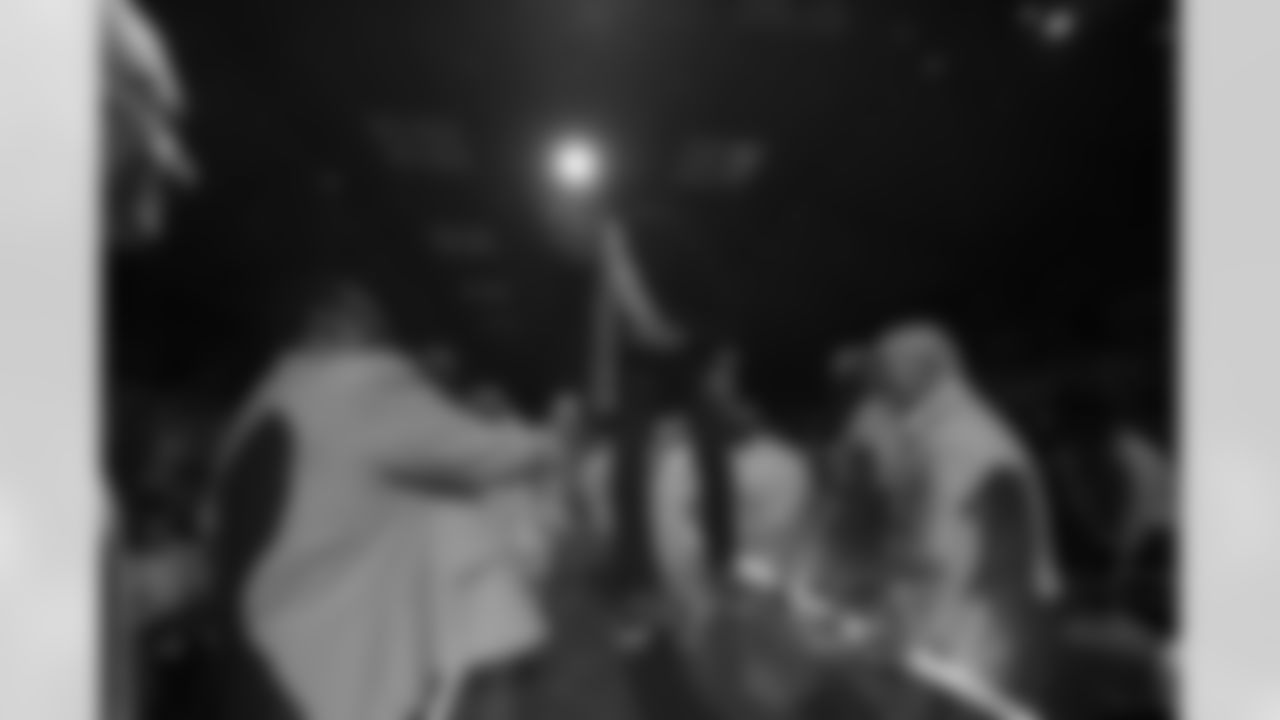
2021 NFL Hall Of Fame inductee John Lynch during the Pro Football Hall of Fame Gold Jacket Dinner on Friday August 6, 2021 in Canton, Ohio. (Aaron Doster/NFL)
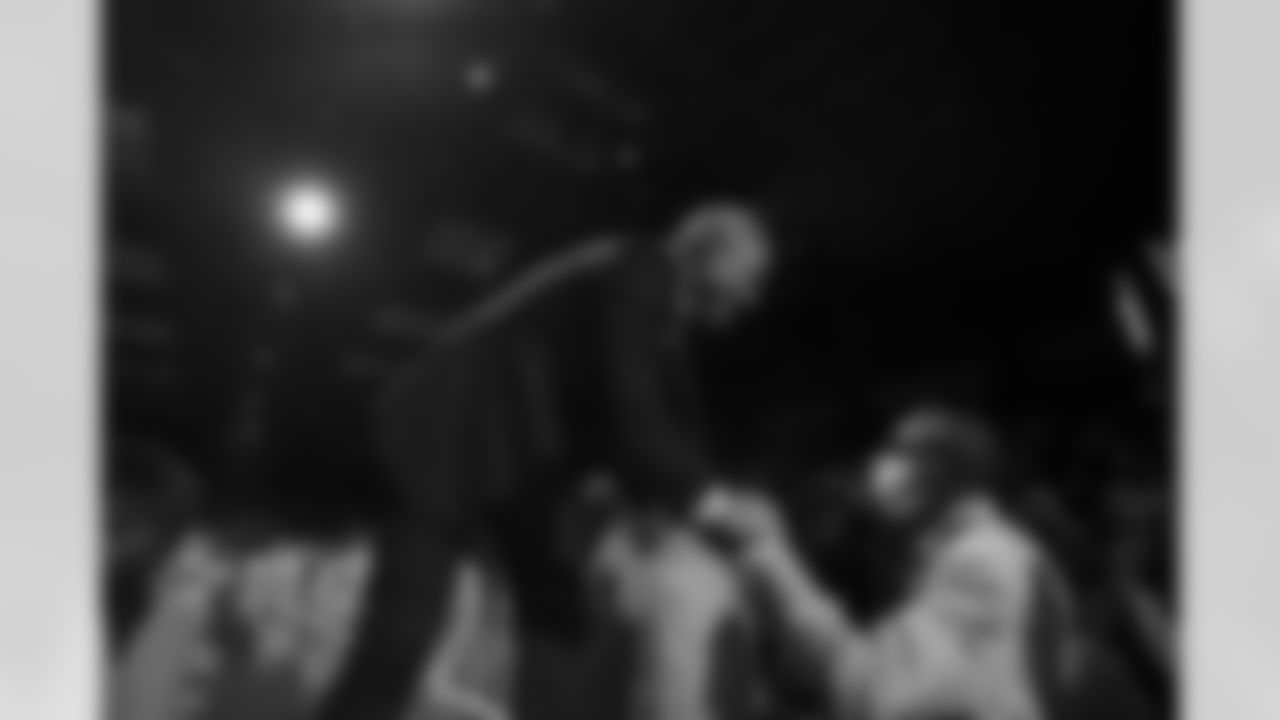
2021 NFL Hall Of Fame inductee John Lynch during the Pro Football Hall of Fame Gold Jacket Dinner on Friday August 6, 2021 in Canton, Ohio. (Aaron Doster/NFL)
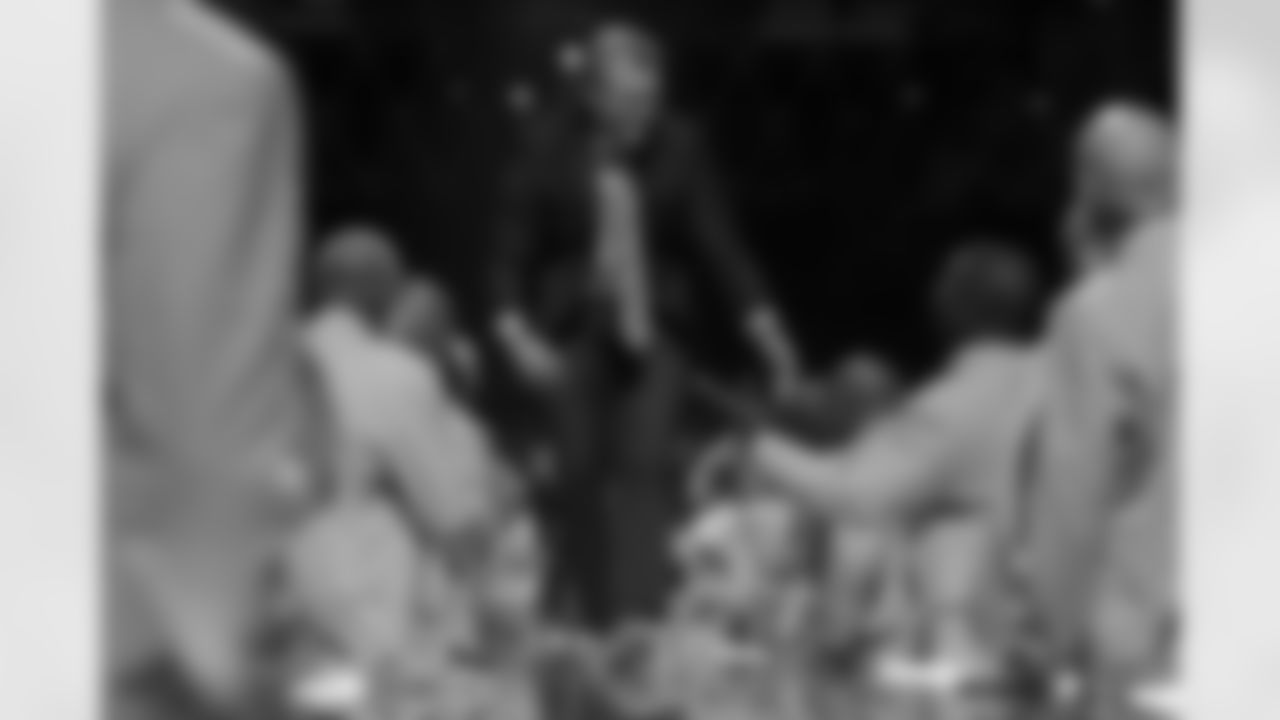
2021 NFL Hall Of Fame inductee John Lynch during the Pro Football Hall of Fame Gold Jacket Dinner on Friday August 6, 2021 in Canton, Ohio. (Aaron Doster/NFL)

2021 NFL Hall Of Fame inductee John Lynch during the Pro Football Hall of Fame Gold Jacket Dinner on Friday August 6, 2021 in Canton, Ohio. (Aaron Doster/NFL)
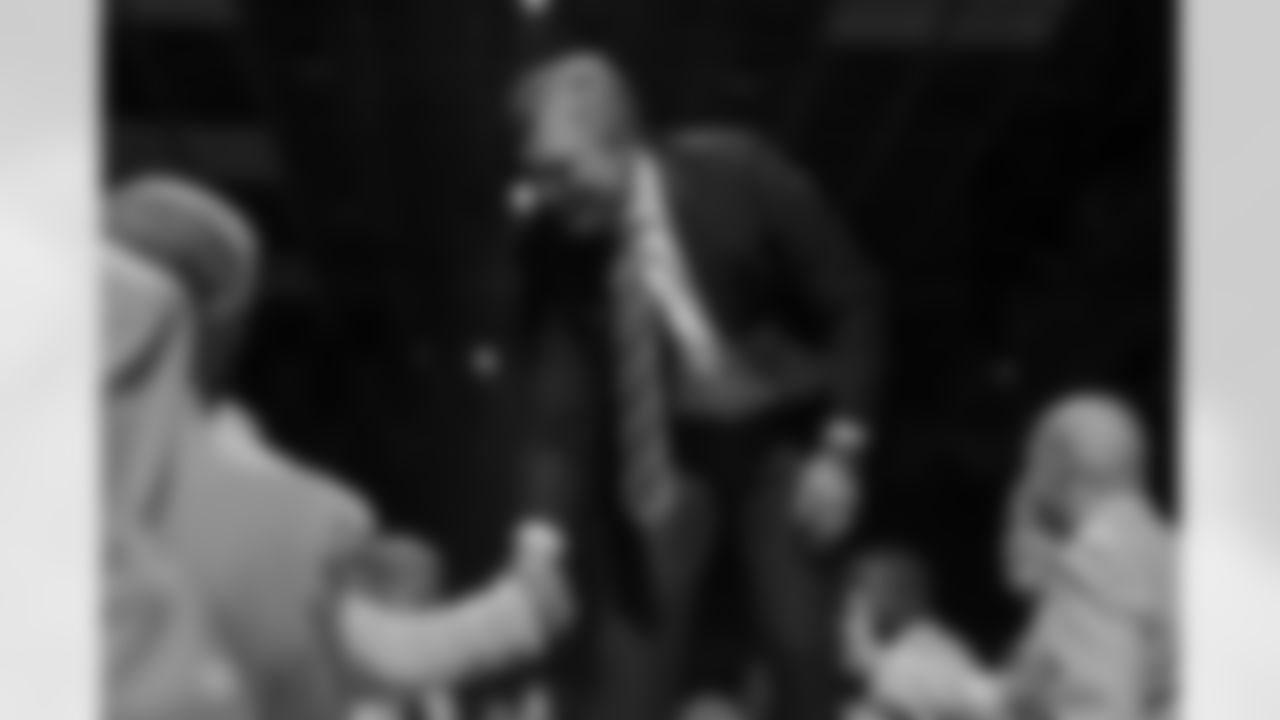
2021 NFL Hall Of Fame inductee John Lynch during the Pro Football Hall of Fame Gold Jacket Dinner on Friday August 6, 2021 in Canton, Ohio. (Aaron Doster/NFL)
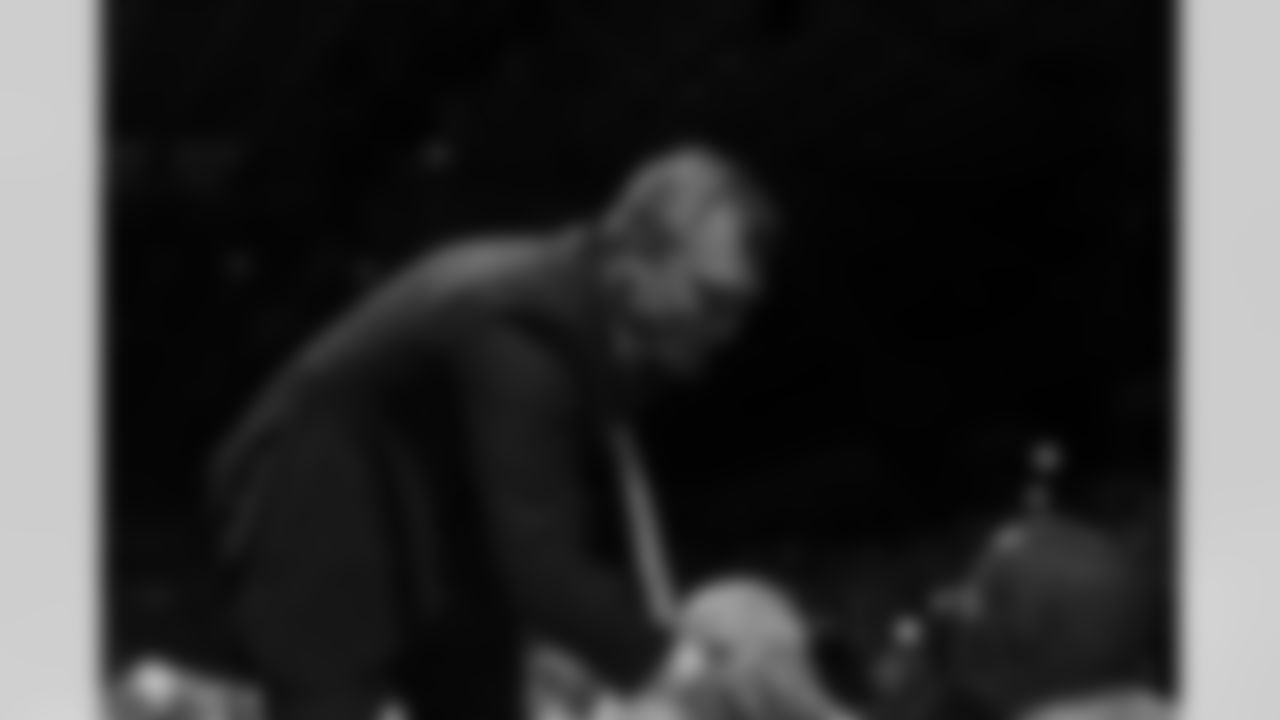
2021 NFL Hall Of Fame inductee John Lynch during the Pro Football Hall of Fame Gold Jacket Dinner on Friday August 6, 2021 in Canton, Ohio. (Aaron Doster/NFL)

2021 NFL Hall Of Fame inductee Peyton Manning during the Pro Football Hall of Fame Gold Jacket Dinner on Friday August 6, 2021 in Canton, Ohio. (Aaron Doster/NFL)
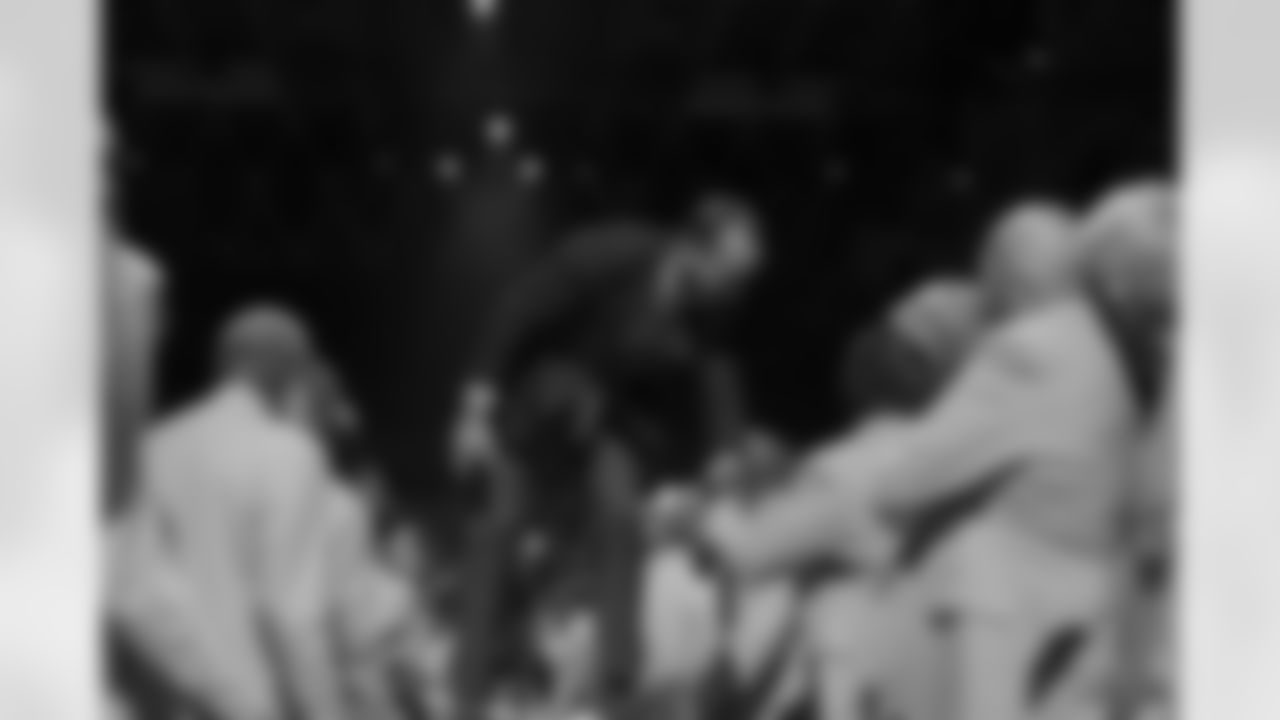
2021 NFL Hall Of Fame inductee Peyton Manning during the Pro Football Hall of Fame Gold Jacket Dinner on Friday August 6, 2021 in Canton, Ohio. (Aaron Doster/NFL)
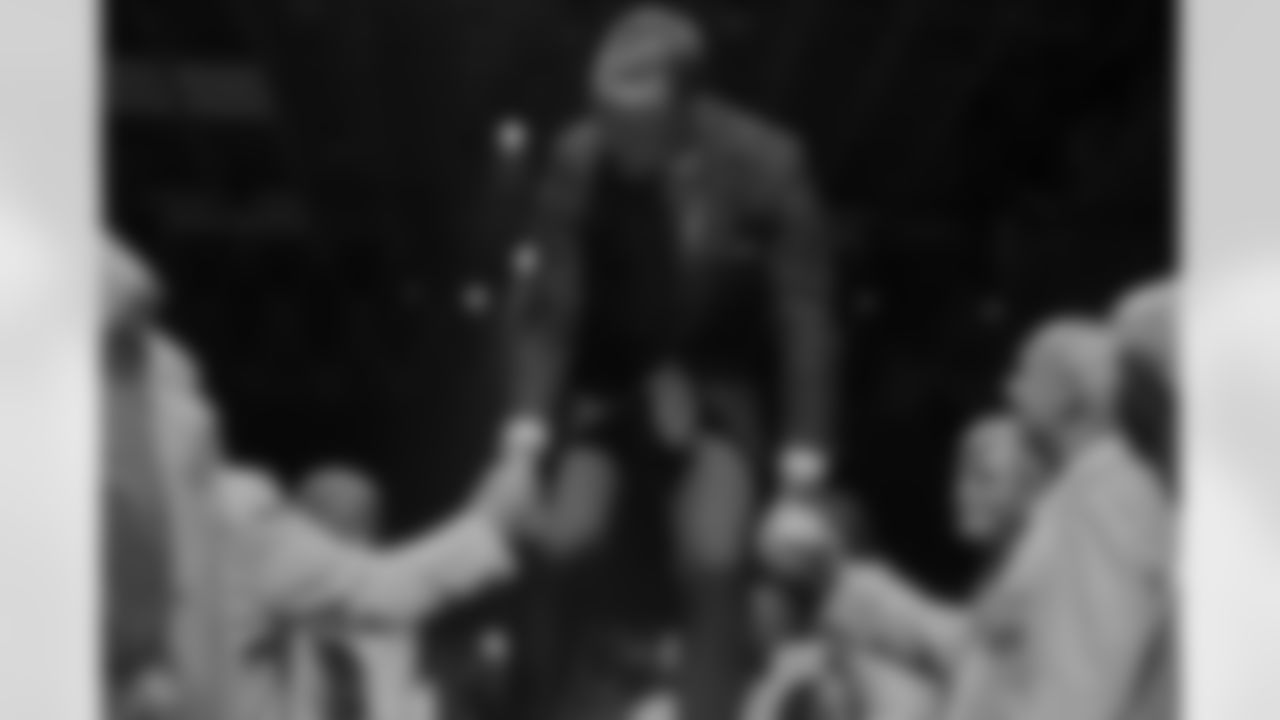
2021 NFL Hall Of Fame inductee Peyton Manning during the Pro Football Hall of Fame Gold Jacket Dinner on Friday August 6, 2021 in Canton, Ohio. (Aaron Doster/NFL)
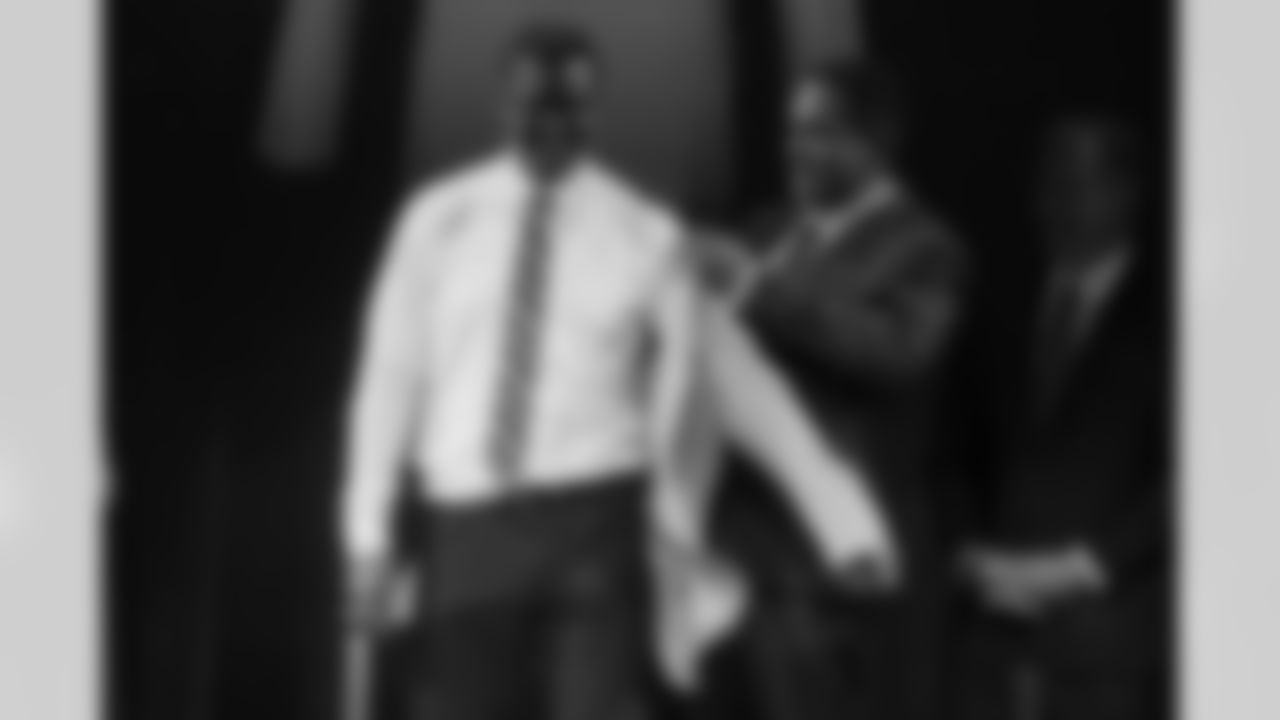
Steve Atwater, a member of the Pro Football Hall of Fame Centennial Class, receives his gold jacket during the gold jacket dinner in Canton, Ohio, Friday, Aug. 6, 2021. (AP Photo/Gene J. Puskar)
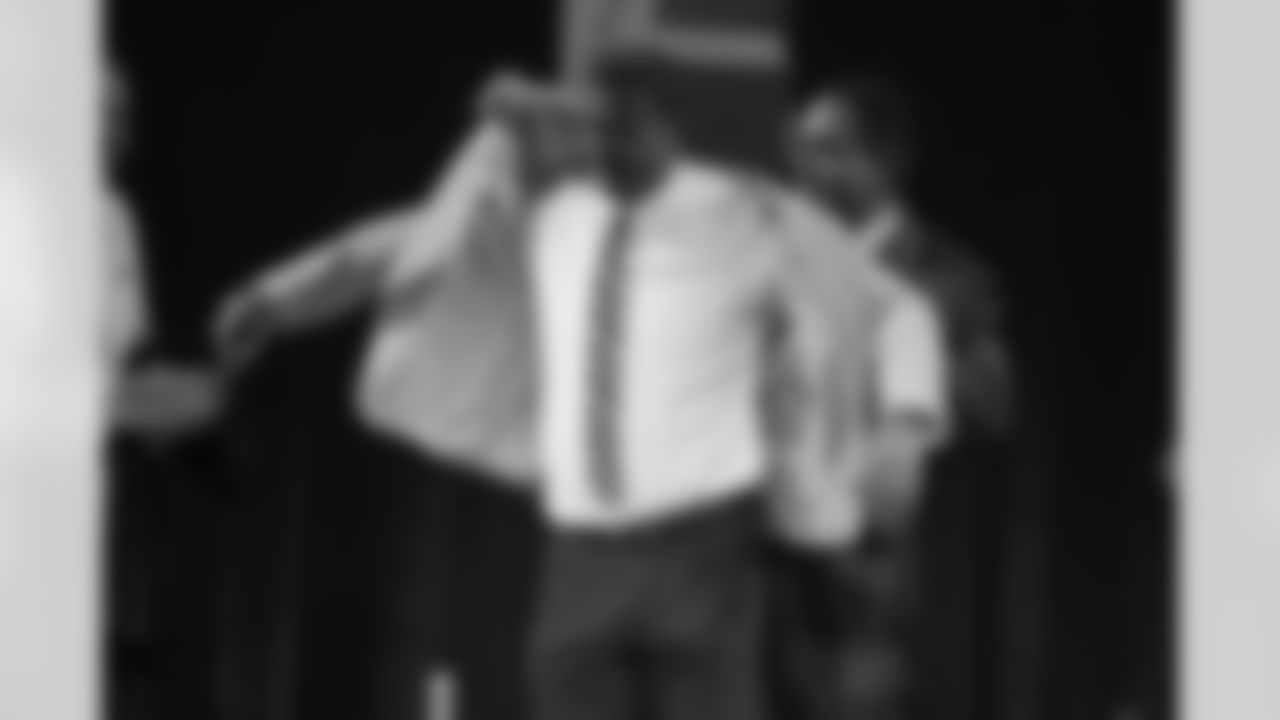
Steve Atwater, a member of the Pro Football Hall of Fame Centennial Class, receives his gold jacket during the gold jacket dinner in Canton, Ohio, Friday, Aug. 6, 2021. (AP Photo/Gene J. Puskar)
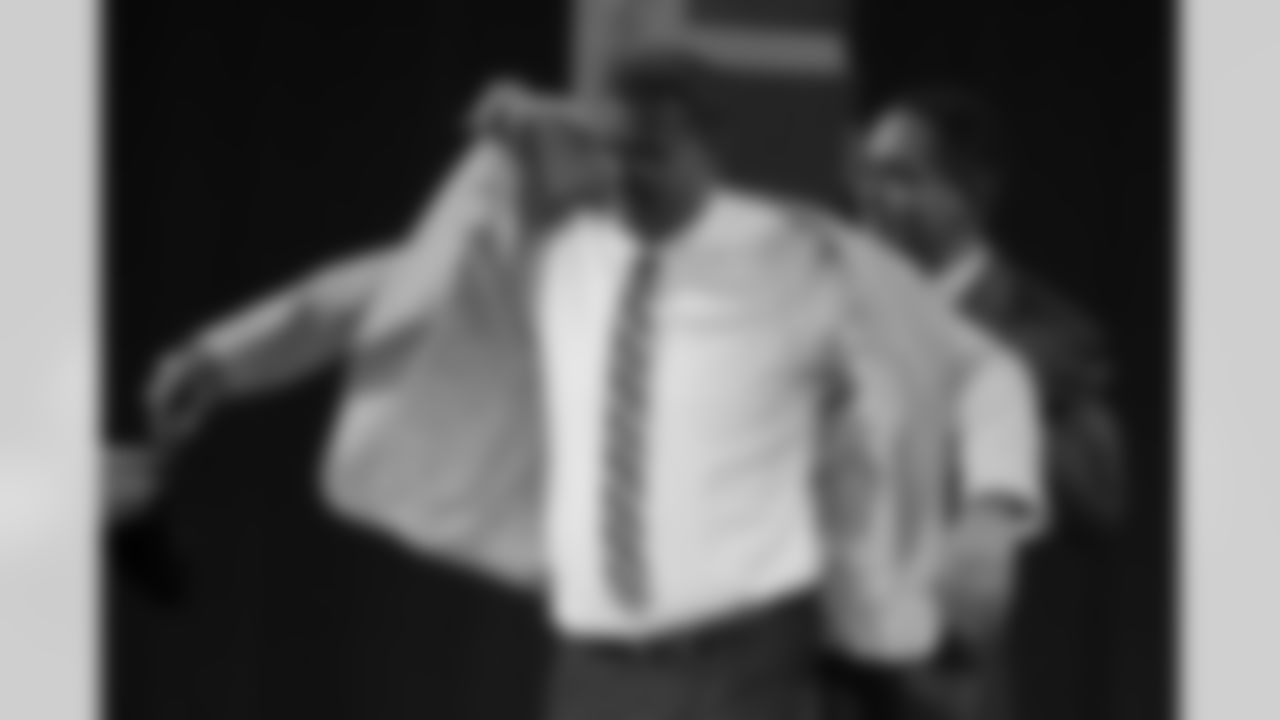
Steve Atwater, a member of the Pro Football Hall of Fame Centennial Class, receives his gold jacket from Dennis Smith during the gold jacket dinner in Canton, Ohio, Friday, Aug. 6, 2021. (AP Photo/Gene J. Puskar)
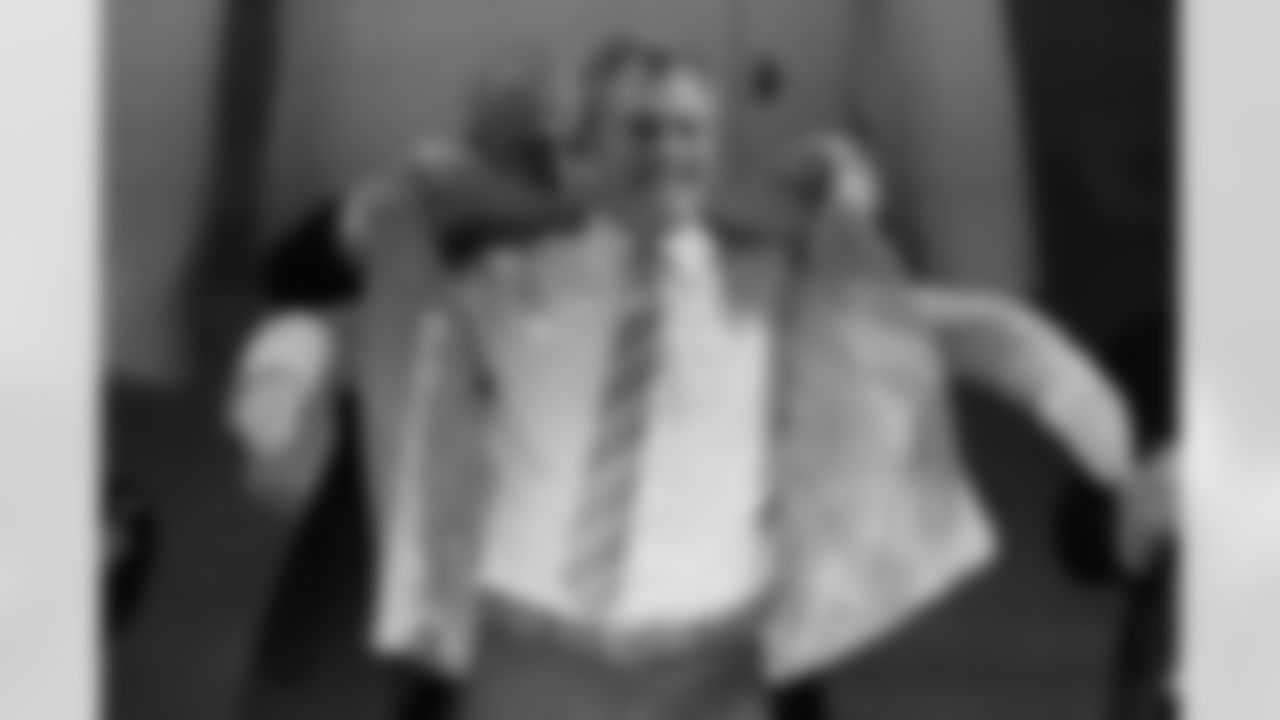
John Lynch, a member of the Pro Football Hall of Fame Class of 2021, receives his gold jacket during the gold jacket dinner in Canton, Ohio, Friday, Aug. 6, 2021. (AP Photo/Gene J. Puskar)
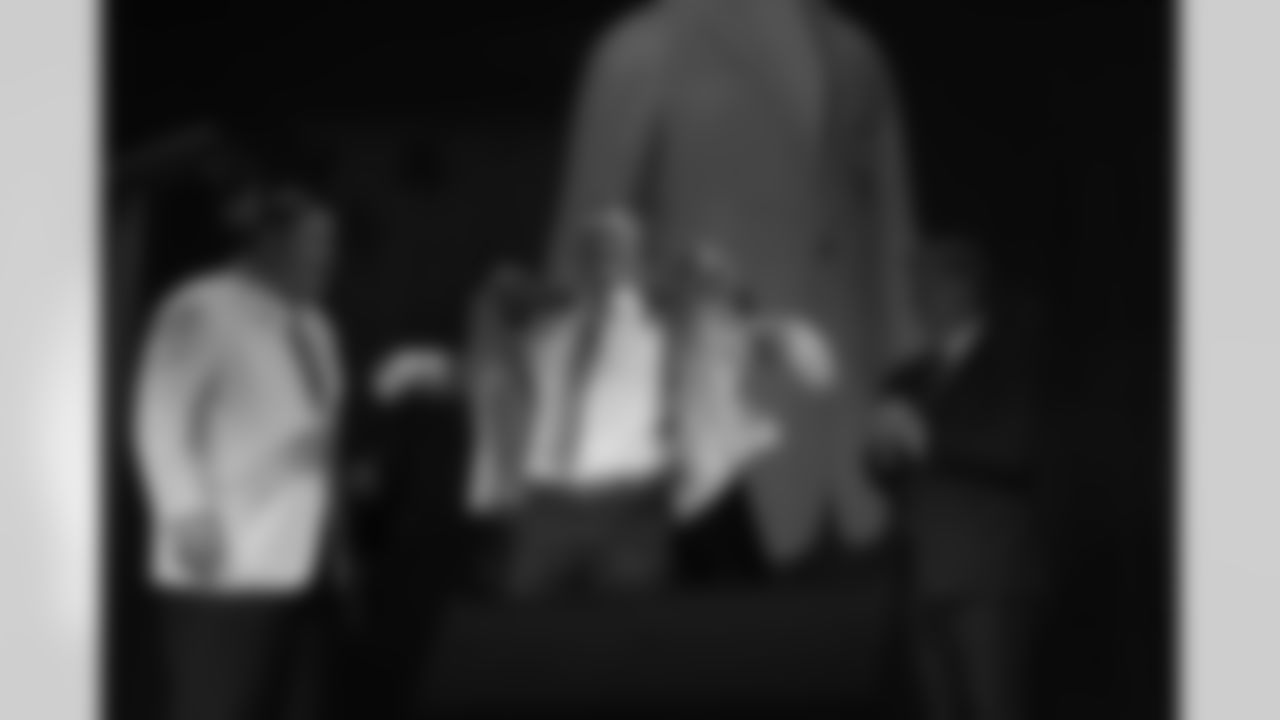
2021 NFL Hall Of Fame inductee John Lynch during the Pro Football Hall of Fame Gold Jacket Dinner on Friday August 6, 2021 in Canton, Ohio. (Aaron Doster/NFL)
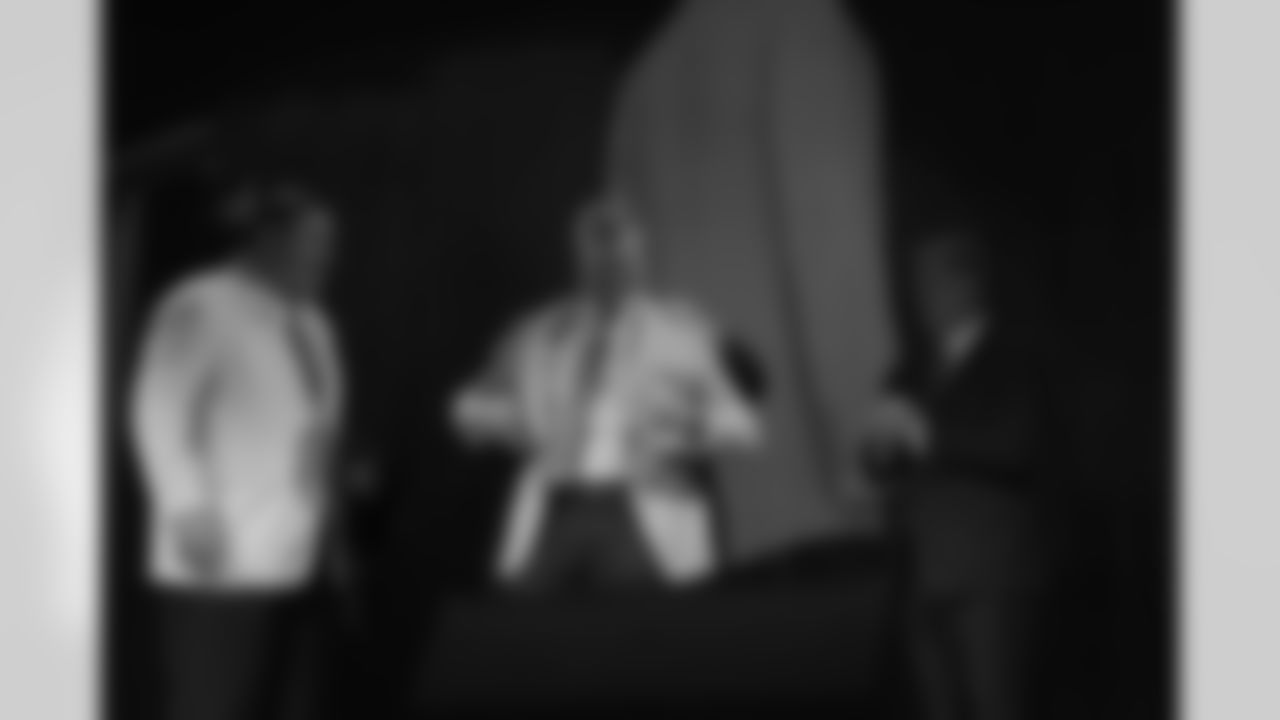
2021 NFL Hall Of Fame inductee John Lynch during the Pro Football Hall of Fame Gold Jacket Dinner on Friday August 6, 2021 in Canton, Ohio. (Aaron Doster/NFL)
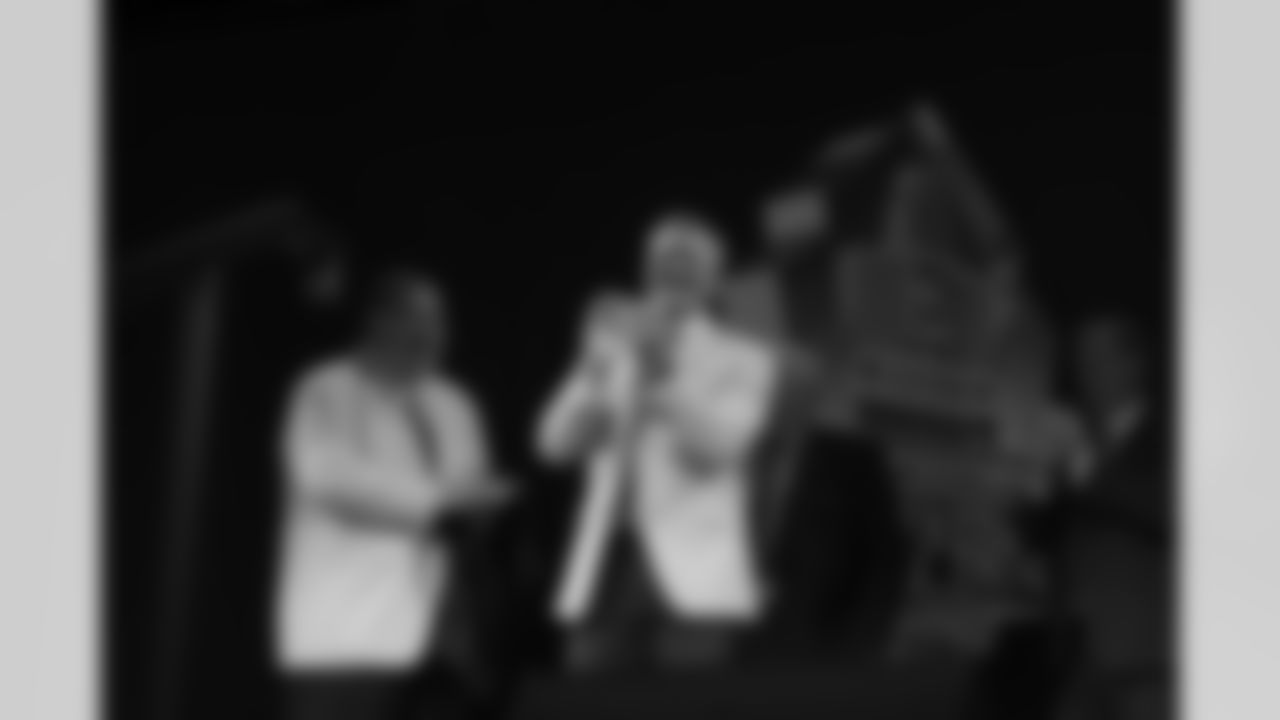
2021 NFL Hall Of Fame inductee John Lynch during the Pro Football Hall of Fame Gold Jacket Dinner on Friday August 6, 2021 in Canton, Ohio. (Aaron Doster/NFL)

2021 NFL Hall Of Fame inductee John Lynch interviewed by Steve Wyche during the Pro Football Hall of Fame Gold Jacket Dinner on Friday August 6, 2021 in Canton, Ohio. (Aaron Doster/NFL)
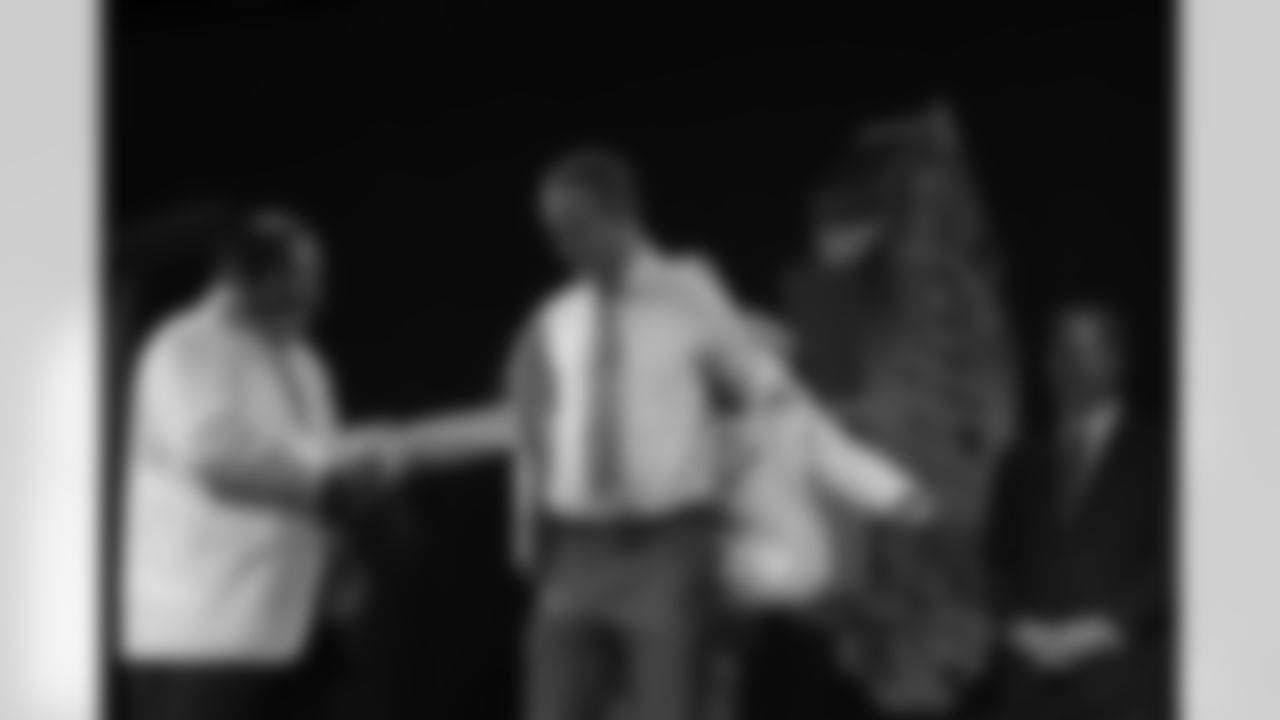
2021 NFL Hall Of Fame inductee Peyton Manning during the Pro Football Hall of Fame Gold Jacket Dinner on Friday August 6, 2021 in Canton, Ohio. (Aaron Doster/NFL)
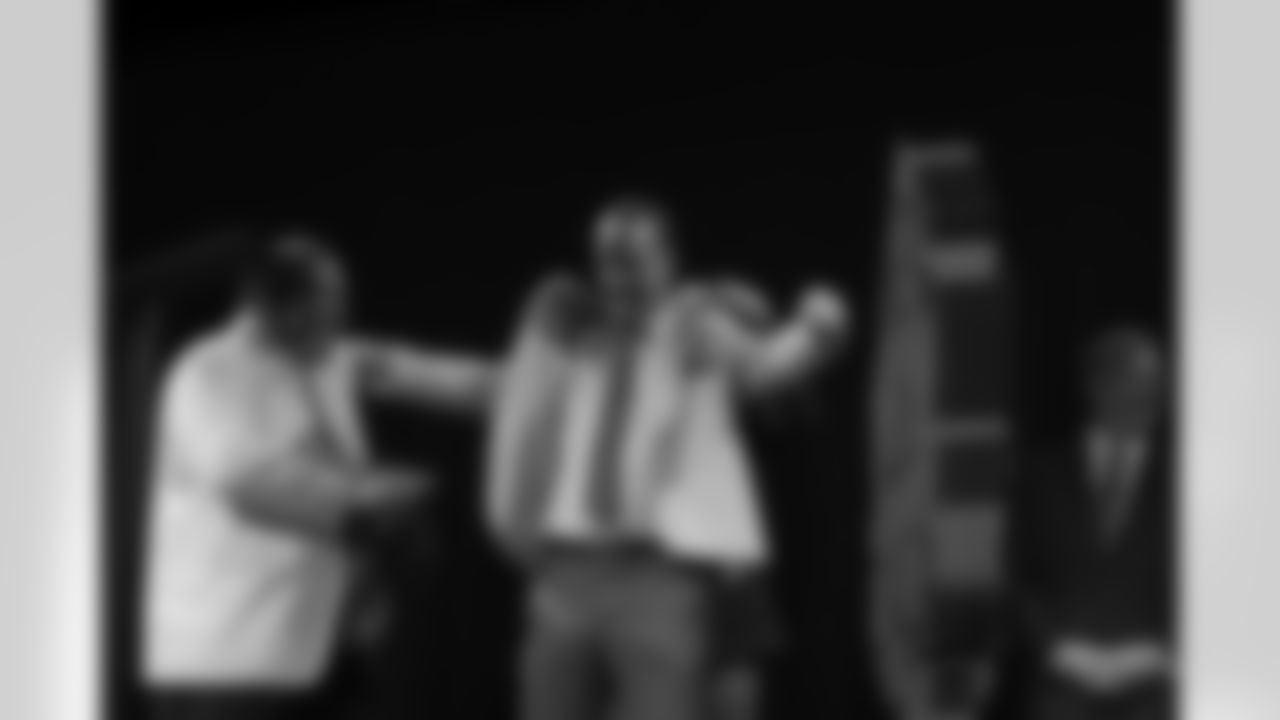
2021 NFL Hall Of Fame inductee Peyton Manning during the Pro Football Hall of Fame Gold Jacket Dinner on Friday August 6, 2021 in Canton, Ohio. (Aaron Doster/NFL)
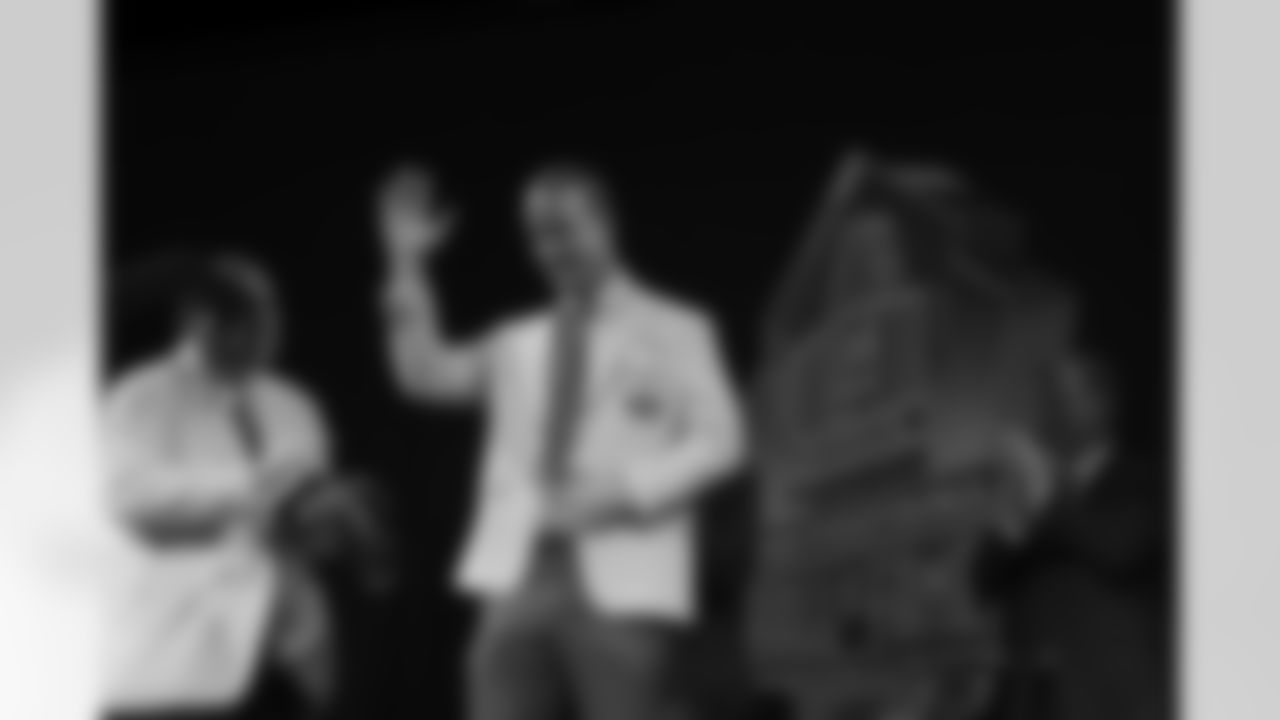
2021 NFL Hall Of Fame inductee Peyton Manning during the Pro Football Hall of Fame Gold Jacket Dinner on Friday August 6, 2021 in Canton, Ohio. (Aaron Doster/NFL)

2021 NFL Hall Of Fame inductee Peyton Manning during the Pro Football Hall of Fame Gold Jacket Dinner on Friday August 6, 2021 in Canton, Ohio. (Aaron Doster/NFL)

2021 NFL Hall Of Fame inductee Peyton Manning during the Pro Football Hall of Fame Gold Jacket Dinner on Friday August 6, 2021 in Canton, Ohio. (Aaron Doster/NFL)
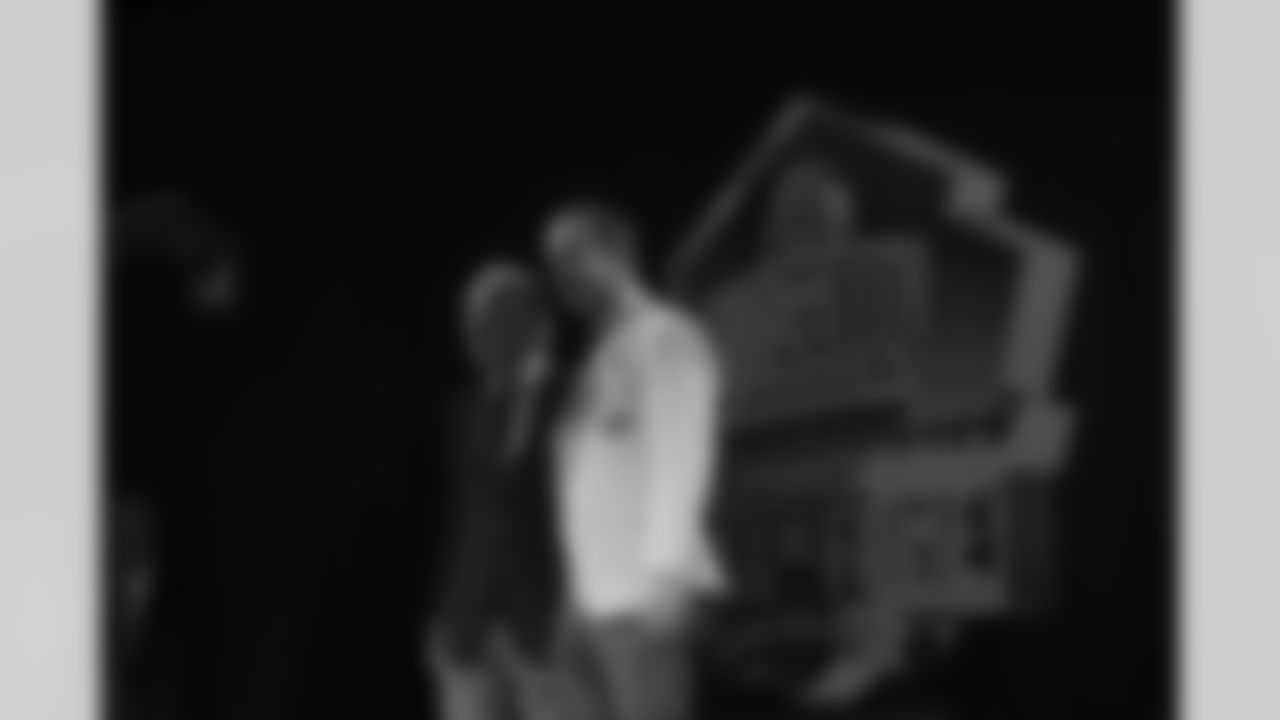
2021 NFL Hall Of Fame inductee Peyton Manning during the Pro Football Hall of Fame Gold Jacket Dinner on Friday August 6, 2021 in Canton, Ohio. (Aaron Doster/NFL)
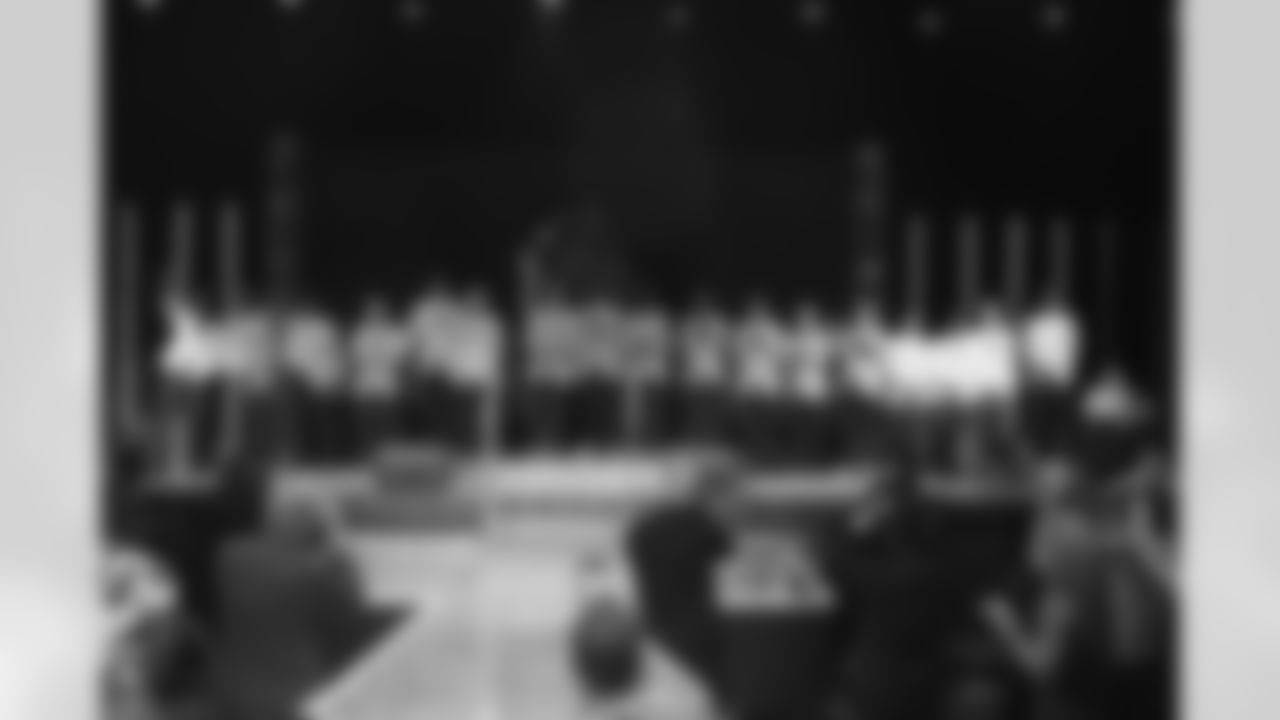
Hall of famers pose for a photo during the Pro Football Hall of Fame Gold Jacket Dinner on Friday August 6, 2021 in Canton, Ohio. (Ben Liebenberg/NFL)
Through interviews with those involved in Peyton Manning's journey back to the field in 2015, we've compiled an oral history of the final act of Manning's Hall of Fame career. Former head coach Gary Kubiak, former director of sports medicine Steve "Greek" Antonopulos, several of Manning's teammates and a couple of Broncos staffers help take you inside the final few weeks of Manning's historic stint with the Broncos.
All interviews were conducted this week by DenverBroncos.com's Aric DiLalla, unless otherwise noted. Those quoted are identified by their titles from the 2015 season.
On the final night of Peyton Manning's Hall of Fame career, the Broncos quarterback stood at the 45-yard line and watched the seconds tick away toward his second career Super Bowl title.
The 24-10 win over the Panthers capped a remarkable four years in Denver that saw Manning earn an MVP award, Comeback Player of the Year honors, three Pro Bowl appearances, two All-Pro nods, two Super Bowl appearances and — at long last — a final Lombardi Trophy.
Denver's 14-point win belies the difficulty of the victory. The Broncos never trailed, but they led by just one possession for nearly 34 minutes, and the result was uncertain until C.J. Anderson barreled into the end zone to take advantage of Von Miller's second strip-sack of the game.
As Manning bathed in confetti in the moments after the game, he compared the struggles — and ultimate triumph — in Super Bowl 50 to the Broncos' entire 2015 campaign.
"This game is much like this season has been," Manning told CBS' Tracy Wolfson that night. "It really tested our toughness, our resilience, our unselfishness. It's only fitting it turned out that way. A great bunch of teammates, a great bunch of guys I got to play with. I just feel very, very grateful."
Manning's words rang true. The final weeks of the season were difficult and full of uncertainty, as the veteran quarterback battled a foot injury that knocked him from the lineup for six games.
His return — to lead a postseason run that featured wins over Ben Roethlisberger, Tom Brady and Cam Newton — featured intense rehab, the talent of a collegiate baseball player and a not-so-subtle message to former head coach Gary Kubiak.
During an 18-year career, Manning became known for his unparalleled dedication to his craft and to the game.
Over the final few weeks of a championship season, he would certainly need it.
THE INJURY
The Broncos entered the 2015 season with still unrealized hopes, as an early playoff exit the previous winter kept a Lombardi Trophy out of the franchise's grasp. Denver took a new approach in 2015, as the organization hired former quarterback and offensive coordinator Gary Kubiak to lead the team. Kubiak, Manning and the Broncos replicated the early season success that the team had found in 2013 and 2014 with Manning under center, but the method of winning was quite different. Denver needed a late interception from safety Darian Stewart to beat Baltimore in Week 1, and cornerback Bradley Roby secured the win in Week 2 in Kansas City. During the team's 7-0 start, the Broncos topped 30 points just once and twice scored fewer than 20 points. Two years earlier, the Broncos topped the 30-point mark in each of their first eight games — and scored at least 45 points in four of those contests.
Still, the Broncos entered their Week 9 matchup with the Colts with a perfect record. But that afternoon, Denver suffered more than just its first loss of the season.
Head Coach Gary Kubiak: "You know, we started 7-0 and went to Indianapolis, played the Colts in Indy, and obviously his foot's bothering him. We played on turf, you know. We go out there, it's a really good game — I think it went down to the last possession where we had a chance and got beat. We come out of the game, and his foot's bothering him."
Head Athletic Trainer Steve "Greek" Antonopulos: "It's something that was kind of ongoing, and I think it was a turf game, as I recall. We played there, and I think it flared up more there. But it had been something that had been bothering him that he never said anything about. He was just trying to take care of it with the normal means that he would normally do with it. But it flared up there and became even more chronic trying to work through it."
Kubiak: "We go on to the next week and to be honest with you, I take full responsibility for it — I shouldn't have let him play. He did not go through his normal routine of his week. His foot was bothering him, he missed practice I think Wednesday [and] even Thursday, I think. I think the only day he practiced was Friday. As coaches, you let a lot of guys play off of one day's practice or whatever, but I shouldn't have did that with him. We go to play the Chiefs and we don't play good at all. He's obviously hurtin'. I even talked to him during. Later in the game against the Chiefs, I told him, 'I shouldn't have put you out here. We're gonna get you healthy.'"
The Broncos were dealt a 29-13 loss that afternoon in Denver, and Manning struggled to a zero-touchdown, four-interception performance.
Quarterback Peyton Manning (following loss to Chiefs): "I have a really hard time using [the injury] as any type of excuse. I had some injuries during the week. 'Greek' and the training staff worked overtime to get me to feeling like I thought like I could go out there and play. Obviously you have to give a lot of feedback yourself, and I felt good enough to go out there and play. If you look back on it now, I have a hard time saying that's why I played badly. Could that be the reason? I guess it always could be. But to me, that's an easy way out. That's kind of an easy line to say after the fact. So I was very honest with 'Greek' and Coach Kubiak that I felt like I could go. I wanted to go, I wanted to be out there for the team."
Manning, though, was destined for several weeks of grueling rehab. Antonopulos and the Broncos' training staff diagnosed Manning with plantar fasciitis, a condition in which the tissue that runs along the bottom of the foot is damaged or torn. The plantar fascia — the ligament that Manning injured — connects the heel to the front of the foot and is crucial to support the foot's arch. When injured, it can create severe pain. And Manning had a serious case.
Antonopulos: "From the initial onset, it became a chronic injury. Plantar fasciitis is an inflammation. He was trying to deal with it. Peyton's a tough guy, as you can imagine, and he was trying work through it. It began to bother him, mentally and physically, and obviously he, Peyton, as inquisitive and thinks everything through, we decided to get [foot specialist] Dr. [Robert] Anderson's opinion and at that point, they put him in a cast and rested him in a cast for a couple of weeks, and then the rehab process back.
"It is a painful injury, because you are on your feet and you can imagine a quarterback setting up and moving. At the very best, it takes, even if you continued to play on it, it takes six, eight weeks for that thing to get back to normal with just doing the foot inserts, the rehab and that kind of stuff, let alone having to be a quarterback and do all the things that he does. I think we were on the verge of eight weeks or so with him, eight to 10 weeks. And his was a very severe case. He tried to work through it, and a lot of people can't. You get to the point where you can or you can't, and as hard as he pushed himself physically and mentally, he wasn't able to do the things he needed to do."
In the immediate aftermath of the injury, it was unclear whether Manning would be able to return to the field.
Kubiak: "Early, probably the first three weeks, nobody knew. He went to see, I want to say Dr. [James] Andrews or somebody somewhere else that put him in a boot, and then we were a little bit unsure at that time."
Manning (the Monday after the Chiefs game): "[I have] just got to get healthy overall. I've got a couple different issues I've been dealing with. I just got back from getting an MRI on that rib cage area. I haven't gotten the results of that, but I think the week can help me try to get healthy in some of the things that I've been dealing with. Hopefully I can use it to my advantage."
Antonopulos: "I think maybe there might have been [some doubt], more in his mind, because he's had some physical things, obviously, and it bothered him without a question to where it was wearing on him, and he knew it was kind of getting near the end. I could imagine the emotion that he went through, let alone physically, and obviously he worked through it, as you would expect him to do, and became better for it."
Manning (on that Monday): "I think that we have a good treatment plan.'Greek' and I have talked. We have a good plan for the week and hope to use it to help us out."
Antonopulos: "He was a part of the plan probably as much or more than any player we've ever had involved, because that's the nature of him. And that's why he's great at everything he does. He thinks everything out, he prepares and wants to be involved in the decision of the whole thing, and obviously that's what we tried to do, incorporate him. We tried to incorporate exercises that were applicable to a quarterback so he'd be able to throw and set up.… The director of rehab, Dustin Little, who's the head athletic trainer with the 49ers now, worked one-on-one with him. They went inside, did all the therapy in here and then he did the conditioning part of the program with the strength staff.
"It was a long process, but he worked hard, did everything he was told to do."
Manning's rehab process began in the training room, where he received consistent treatment for his injury. As Kubiak noted, Manning began in a boot and spent several weeks without any on-field activity. As the weeks went by — and the Broncos kept winning — Manning was able to take another step toward his return to game action.
Kubiak (at Manning's retirement press conference): "I remember him coming out of the cast after putting his foot in the cast for a couple weeks, right? Then he comes out of the cast and we sit down and I said, 'OK, what's the next step? What do we do here?' He said, 'Well, it's time to go back to work. I want to come back. I want to play. I want to finish this thing out the right way.' And I said, 'Alright, well, we'll step back on the field and go to work next week.' And I'll never forget what he told me that day. He said, 'Listen, I don't want to be a distraction. I'm not ready to play yet. If I go back on the field with that team, it's going to be all about me. You keep everybody focused on the team. I'll get myself well.'"
Antonopulos: "He even came in here and closed the door one day and said, 'I am going to come back, and I'm going to be back. You've just got to work with me and support me and we'll get it.' That was his focus."
Kubiak: "I saw a guy that might have been as determined as anybody I've ever seen. When he did start the workout process, watching him work out, watching him push himself — he wasn't doing it just to do it. He was doing it determined like hell to get back. And his team [was] hanging on. They were hanging on and we were going to be a playoff team; it was just a matter of how good of a playoff team. But his determination was tremendous once he got out of that boot and got going."
THE THROWING SESSIONS
As Manning looked for a way to get back on the field without causing a distraction, he turned to the Pat Bowlen Fieldhouse. In the mornings, as the rest of the team met before practice, Manning would head to the indoor turf field to work on conditioning — and much more. Manning wanted to do more than just get in game shape; he wanted to be ready to win when the moment was right. The sessions over the coming few weeks would not consist of routine throws. Instead, as Manning neared a return, he would run through precise route combinations, situational drills and even the team's daily practice script.
But Manning was not joined by Demaryius Thomas or Emmanuel Sanders during his rehab. They were busy getting ready for the next week's opponent. Instead, Manning assembled a hodgepodge crew that included practice squad wide receiver Jordan Taylor, rookie tight end Jeff Heuerman, Assistant Equipment Manager Mike Harrington, Director of Sports Turf & Grounds Brooks Dodson and a couple of other staff members.
In the Fieldhouse, as the rest of the team prepped for game week, the unlikely crew helped prepare one of the greatest quarterbacks of all time for his final act.
Antonopulos: "Obviously from the first time he went on the field, it looked like he was getting close to being ready, but obviously there's an endurance factor of playing a whole game. So it took a couple of weeks of him working out there. I mean, he looked good. He started with the minimal throwing, the minimal setups, the rollouts and things he needed to do in the offense and then just built on that. And once he was able to do a long session — it started with 20 minutes or so and ended up being an hour or so long, and in addition, he was doing all the stuff in [in the training room] and all the stuff over there. So it made for a long day and all the mental preparation."
Director of Sports Turf & Grounds Brooks Dodson: "How did I get involved? I think I was just asked to go over and help. Like, Can you come over? I don't know who put it together. I think Mike Harrington might have been the one to ask me. You know Peyton — he probably had something to do with it. I was asked to come and work out, come over and help out with him. That was it. It was like, We need to go catch some balls. So I went in there. That really was how it all started. And then it just turned into every day. But I think it was just very innocent — Hey, can you come in and help us out? Because I can catch, right? I think it was just that simple. Because it happens here every day, like, Hey, can you come and throw? Can you come and do something with us? And it think that's kind of how it came down.
"Those are like the things that you dream about as a kid, right? In my era, it was John Elway. John Elway, Dan Marino — those guys, right? — that you envision. Never did I think I'd be working with Peyton Manning and catching passes with him, but that was pretty cool."
Practice squad wide receiver Jordan Taylor: "He texted the night before, so maybe Sunday. It might have been right after a game. He just asked if I'd be willing to go in there. At first it was just run a few routes, you know, just to try to get him some action, some sort of live reps while he was in his rehab process."
Assistant Equipment Manager Mike Harrington: "You know, he'd been out for a while. And I just remember him wanting to get some reps. And it just turned into — if you know anything from what Peyton has done in the past, like, we don't just throw the ball. Everything is related to the game. … We need an organization and every practice, every session we did seemed like it was a little more intensive to play a game. It goes to the point where I think at the very end I think we were even doing plays from like a game. So we'd line up six or seven plays for like a mock drive or something like that. But every day was kind of leading into something a little bit more intense.
"We'd stretch out and warm up, he'd do drills. I'd run him through the drills as if the quarterback coach would, and then once that kind of ended, we just kind of did plays — like, first quarter, second quarter, third quarter and it just kind of got bigger and better. That's kind of how that was. But it was definitely trying to get him ready to be ready."
Dodson: "It was impressive to see that man work. … When we went in there, we didn't talk. We went in there, and this man, this guy, was so immersed in his preparation and what he was doing that you didn't want to let him down. You could see what he was doing. He was giving us some direction on what to do, and I just didn't want to let him down. … Watching him work was one of the most impressive things I'd ever seen. And how immersed he was in his preparation and rehab preparation — it just raised my level of accountability. … How immersed he was in what he was doing to get himself ready, you saw the greatness and why he's great. … I was witnessing firsthand what people all over the league had already known. And to be a part of that, it just raised my level of accountability, because I didn't want to let him down. … And I was doing everything I could to catch every ball and to make sure that I was running the routes exactly how the guys out there may be doing it. So that was what I remember most. [It] was him. Him doing his thing and then watching all of us like no one wanted to mess up, because we wanted to make sure that … we were fulfilling our part.
Taylor: "Obviously I was honored obviously that he would come to me and ask me to do or to assist in whatever way that I could, and I was willing to do whatever, obviously. Him being who he is — obviously a Hall of Famer and all that — but leading up to that as well. So it was obviously it was a blessing for me to get that extra time with him that not a lot of guys can say that they did. And so I tried to enjoy every minute of it."
Dodson: "Jordan would handle probably the more specialized things. But I was running secondary with Jordan so we could keep moving. But yeah, no, I was running routes — a lot of top-end route things had to be at an exact spot at the exact time, and his direction was, You need to be right there. And that was very simple and you knew you had to be right there."
Taylor: "It was definitely intense — a high-intensity level at all times. There was no dropping a ball. There was no running a route at the wrong depth or, definitely, running the wrong route. By the end of it, like I said, we were running full two-minute drills up and down the field. Obviously we didn't have a defense in there — there was only about three guys in there: me, Peyton and one of our equipment guys snapping the ball, probably a trainer just in there monitoring him as we went. But yeah, I would line up in the backfield like a running back so he could take his steps for certain run plays or play-action plays, whatever he needed to work on. Obviously as we got closer in to him coming back and playing, we were physically going through the practice scripts, exactly what the team would be going through and what plays would be called that week and whatnot. For sure, I mean, it just goes to show the attention to detail he always showed toward the game and toward being the great competitor that he was. And obviously that showed his entire career."
Dodson: "Not a word would be spoken, and then when we were done, we'd stand around, all drank Gatorade and we'd talk for a few minutes, right? It was, Thanks, good job, right? Good work. What have you. And then I went back to work.
"You don't want to let him down. I would tell you that Jordan's game probably was elevated in that capacity, and Mike Harrington was the same way. You don't want to let that man down, because you see what he's doing."
Taylor: "There definitely was a lot of strides made for him from the first day we started to the end of the process. It was probably two weeks before he actually was able to start again that you could seriously tell whether it was going through his drop-backs quicker, more confident on that foot. His throws had a lot more pace on them. There was a lot more zip on the ball. And then you could also tell, even though he was intense from Day 1, his level of intensity turned up even another notch as he was getting closer to starting. For sure, there were definitely signs of him being ready to go and getting back to where — obviously I don't think he was ever at 100 percent of what Peyton Manning was at at one time, but close to 100 percent to where he could come in and be the guy that we needed at the time."
Dodson: "Just having watched him for the years prior, I never had a doubt that he was going to make it back. Obviously I'm not a doctor by any means, but the way he was going about this, and it progressively got better, watching him work. I think we were in there about every day, or most every day, if I recall, and you could tell towards the end, and I don't know what it was in him, but the ball started coming, it started coming with a bit more force. He was always on point, but there was more umph to it as he got going. And I don't know if that was his own motivation, but I don't think I ever doubted him. Just watching that guy do what he was doing there, there was never a question to me. … I was worried about my own health — making sure I stayed healthy and didn't pull a hammy and my physical endurance so I could keep up with the guy."
Harrington: "I kind of felt like we were getting kind of close then. Like he might be able to do it. Then that week of the Chargers game, he looked really good."
THE SIGNAL
As Manning rehabbed from his injury, the Broncos kept their season alive. Following the loss to Kansas City that knocked Manning from the lineup, Brock Osweiler and a swarming Denver defense earned a road win over Chicago. The following week, in the finest performance of his career, Osweiler helped the Broncos overcome a 14-point fourth-quarter deficit to earn an overtime win over New England. C.J. Anderson's 48-yard touchdown run in the snow remains one of the lasting memories of the season. Denver rolled to a win over the Chargers to improve to 10-2 — and 3-0 under Osweiler — before a pair of losses to the Raiders and Steelers dropped the Broncos to 10-4.
Kubiak, though, would have more on his mind than just that week's game plan or finishing the regular season strong.
His Hall of Fame quarterback was ready to play.
Kubiak (at Manning's 2016 retirement press conference): "He went to work. And we filmed those sessions. And I watched the film and we went through that process for a few weeks. I would deal with the team and he would be over there working in the mornings. Every Friday, I'd come over there and I'd watch him work out. We went through this process for a few weeks, and as we went through that process, there were some highs and lows. There was one setback if I recall. But we kept pushing and all of the sudden it was different. I knew he felt like it was time, that he was ready to play, that he was in the right place.
"So I think there were two weeks left in the regular season. He and I had talked and I could tell in his voice he felt very good about what was going on and he was ready to come back. So we decided that week that we'd proceed the same way. So we started our Wednesday, had the meeting with the team, he went over and worked out, we went about our business. That evening, I watched his tape and it looked better than ever. Everything was pretty consistent. Thursday was different. We had our work as a team, he had his workout. I sat down and watched the film. As I'm watching the film that day, there was something different about the workout. During the workout, he sent me a signal to the film. 'Hey, we're No. 1.' You could take it that way. I took it as 'I'm ready to play, Coach.'"
Manning, as seen in a clip in a 2016 episode of NFL Network's America's Game, turned to a camera in the Pat Bowlen Fieldhouse and raised his middle fingers. The five-time MVP was sending a message.
Manning (at his 2016 retirement press conference): "I'd be lying if I sat here and told you that was not a frustrating time. The team meets here every morning. I'm a part of those meetings, and then everyone goes on to their individual meetings and goes to practice and I go in the little quarantined sandbox at the far corner. 'Hey, don't get near any of the real players. You go over there and you can take "Sunshine" [Taylor].' It was nice of them to give me a practice squad receiver, an equipment guy and a guy on injured reserve to throw to. That really helped. I really appreciated that."
Dodson: "I remember on the west goal line, and that day — I would say that week — that day, he was just in a different world anyways, right? And we were coming to the end of it and he had had what I remembered as a good session, right? And I just remember him throwing up his fingers, as we all do, right? And we all just kind of got a smile. But again, he was doing what he was doing. I was doing my part to stay away from that stuff. It obviously brings a chuckle, and we all knew what was going on, because there's cameras everywhere. We all knew what he was saying, but we didn't have to talk about it. We could chuckle about it, but he was in a different place. That's what I remember about that day. He was completely in another place."
Taylor: "I was just laughing, and I knew. I was like, 'Hell yeah, man. I'm ready to go, too!' Obviously I was on the practice squad at the time, but from that point on, even pregame, I was out there running routes for him, from the time that he started again until obviously we went to the Super Bowl. I was pumped."
Harrington: "It was surprising, because I think the comment before that was that no one's watched this video so it doesn't matter. We all know — staff members — we all knew that everyone's watching it. So we were all just shocked. … He was very frustrated obviously, and he was upset. … But it was funny, because it was about that time we thought maybe he's ready to come back. Like he's ready to come back."
Kubiak: "It was like, 'Holy s---, he's ready to go.' He was pretty adamant saying, 'Hey, I want to come back and play, and I can do this.' Greek and John [Elway] could see it as well as I could, and we said OK. It was a question of when. But he was very determined and we knew."
Manning (at his 2016 retirement press conference): "It was a frustrating time because I wasn't getting as healthy as quickly as I wanted to. I'm throwing in that indoor facility and not feeling the same. And then you are starting to make some progress, then you have a little setback, and then of course, you're not playing. I was so fortunate for so many years to have great health and to have played in so many games as to not to be playing, it was tough. I was starting to feel a little better around that time and maybe getting back to being a little more myself and my signals and my hand gestures and so I think it was the timing of that."
Kubiak (at Manning's 2016 retirement press conference): "I was heading home that night, I texted him. I said, 'Hey, the workout looked great today, and, oh, by the way, I got the signal.' I said, 'I'll see you tomorrow morning at nine o'clock. I want to watch you work out tomorrow. So let me get through with the team in the morning and I'm coming to watch.'
"So we had our meeting Friday morning, 'Greek' and I walked over to the bubble, walked in and they were through and they were supposed to start at nine but they were already through. So I walked in the bubble and I looked at all of them, and I said, 'Hey, what's the deal here? I was supposed to watch you guys at nine.' And his three buddies, they kind of tip-toed out of the bubble because they knew something was fixing to take place here. But they all said, 'Coach, he said we were starting at eight.' So they were through.
"So he and I started our conversation, and I'll try to make a long story short: [He said,] 'I wanted to. I'm ready to play.' Before I knew it, the only people left in the bubble were Peyton and I, and a bag of footballs. For five minutes, I proceeded to tell him what I thought was going on with our team and where we were at. For the next 25 minutes, Peyton proceeded to tell me where he was, what he thought our team could do and that he was ready to lead our team in that direction. And he was right. He was right."
THE RETURN
In Week 16, Denver again overcame a 14-point deficit — this time against the Bengals — to improve to 11-4 on the year.
Denver approached the final game of the season, a home matchup with the Chargers, with plenty at stake. A loss to San Diego could hand the Chiefs the division, while a win would potentially secure homefield advantage throughout the playoffs. Manning was slated to be active for the season finale, but for the first time in his career, he was scheduled to serve as the backup quarterback.
Kubiak: "I kind of knew he was doing pretty good and was ready to go — at least, that was the message he was sending me — I talked to him that week and we were playing San Diego. I said, Peyton, I just think it's important for players to see you put the uniform back on. And to ask a Hall of Famer to not start a game and put the uniform back on against San Diego, that was very difficult for me, and I knew it was difficult for him, but that tells you the type of character he has."
Manning (ahead of the 2015 season finale): "I'm glad to get back on the practice field and I expect to be out there on Sunday in uniform. That's a good step. It's been a long haul, this rehab. It's a positive step to get back on the field and maybe be able to make more of a contribution during the week of practice and more on Sunday than just being in street clothes. I'll do what I can to help the team, help Brock, so I'm happy to be more a part of it now than just being in street clothes and kind of quarantined in the indoor facility working out on my own. To be more a part of the team is a positive step."
In the first half against the Chargers, it was clear the Broncos needed Manning. A Miami win over New England earlier that afternoon had given Denver a chance to clinch the No. 1 seed, but the Broncos struggled to put away a 4-11 Chargers team in the opening 30 minutes. Following a 72-yard touchdown on the second play of the game, the Broncos turned the ball over on four of their next five possessions.
Denver held just a one-point lead at halftime when Kubiak made the change and put Manning in for the first time in seven weeks. As Manning jogged out onto the field, the Denver crowd erupted.
Kubiak: "They were begging for him to come back. You could see it in the first half in how we were playing against San Diego in Week 17. They wanted his presence. They wanted his leadership. They wanted him back on that field. What Peyton did — you know, he's like all these Hall of Fame players. They raised the level of everybody around them. Yeah, he's sitting there at 40 years old at the end, and this is gonna be it for him, but just the fact that he's in that huddle and battling with the football team, it increased the level of play of everybody else in the organization — every coach, every player, every trainer. It was like, 'Holy s---, we've got to get this done for this guy. Look what he's doing for us.' You're right, that's tremendous. I can't explain that enough."
Dodson: "So I'm on the sidelines. During the games, over that course of time, I probably talked to him more than I ever would have. The thing that I recall was he would come out onto the sidelines and he would watch the games. I always stand opposite of play. So the play's going one way, I want to stay back away. I want to stay out of the way. And often times he would be to the sideline or whenever he would, he would come over and we would chat. And there were a couple times, he was just sharing some memories. … Of different players on the other teams, guys he had played with. Just some short stories about different times and different things that had happened. Just the conversation that we would have standing there was just like you and I sitting here and talking now. The day that he went back on the field, he was out. In the first half, I had actually stood with him for a few minutes, and we had chatted. We were just kind of talking like we were. And then in the second half, when he went, like for me, personally, I was super proud. Like, 'He did it. Like, Good for him — and, more importantly, Good for us! Good for us that he's back. And then the rest is history."
Antonopulos: "When he came here, that was the whole aura of it: Here comes Peyton Manning. We're going to do big things around here. That [game] was no different."
Dodson: "I stood the whole second half with a huge smile on my face just because I knew what he had put into it just in the little time that I had him here. We're not even talking about all the other stuff that he did that I never saw or most of us never saw. … I knew we were in a good spot at that point."
Taylor: "At the end of the day, you've got Peyton Manning on the sideline who's ready to go, and he's obviously a Hall of Famer, a multiple-time MVP, multiple-time Super Bowl champ. It's hard not to put the guy back in. And I think once we did, everybody knew that he might not have been the Peyton that was going to put up 50, 60 points, you know, throw for three, four hundred yards, you know, and five touchdowns, but he was going to manage the game and give us a chance. And with our defense that year, that's all we could ask for."
Manning and the Broncos held on to win against the Chargers and clinched the No. 1 seed. From there, they dispatched the Steelers and Patriots in closely contested, one-possession games at home before earning a 24-10 win against the Panthers on the game's biggest stage. Manning wasn't perfect; he threw for 539 yards, two touchdowns and an interception across the three games. But Manning's leadership, experience and ability to make timely plays was precisely what the Broncos needed to make their run to a title — even as he continued to battle the injury.
Antonopulos: "From the movement standpoint and the agility and functionality, he was probably pretty close [to full health]. Knowing him and his perfection, it probably wasn't there yet. … It was a blessing it worked out the way it did, in the sense that it didn't just go back in full to start with, that at least he had a half of a game before he went in. I mean, I think mentally it was — any injury that a player comes off of, the last part of the rehab and getting back on the field is actually getting back on the field and doing what they do. That kind of was the last phase."
Kubiak: "I think he was battling every day. I think his foot was obviously feeling better, because he had so much focus on that. But it's a hard, hard gig and when you miss that much time and you come back and you not only come back, you go a half against San Diego; Pittsburgh Steelers, they're a defensive football team; New England, they're a defensive football team; and then Carolina, they're one of, along with ours, probably one of the best defenses in the history of the game as well that year. The gauntlet that he had to lead his team through was tremendous. It just tells you what he's made of. I can't speak for him and tell you about every ache and pain, but I can just tell you personally that I know what he went through for that organization for them to win a third championship, and it was special."
Von Miller, Super Bowl 50 MVP: "He went out there and won [against the Chargers], and we were able to get the No. 1 seed going to the Super Bowl. We just felt it, man. The same shot we had in [2013], we had it again in 2015 and we just wanted to take advantage. I think everybody did that. Everybody played lights out from the offensive line to the "No-Fly Zone." We had this incredible run and we were able to go win the Super Bowl."
In a Hall of Fame career — one that will be celebrated Sunday in Canton, Ohio — Manning has accomplished a great deal. He's one of two quarterbacks to lead two different franchises to Super Bowls and has won a league-record five MVP awards. He has set a slew of records and still owns nearly every single-season passing mark. Manning has seven first-team All-Pros and 14 Pro Bowls to his name — and yet, the end to his 2015 season may be one of his most impressive feats.
It was a testament to Manning's patented drive. Even as his body threatened to give in to the demands of his 18th NFL season, Manning wouldn't allow it. He returned for his teammates, for his organization and for one final series of moments. And the reward, for weeks of arduous rehab, was the second world championship of his career.
Kubiak: "Every season has its stories, but that one was exceptional, and the fact that what he went through physically and emotionally just to play one more season with all them guys will always mean the world to all of them — and to me as well."
Antonopulos: "I'm just proud that he got back, and proud for him. And I'm proud that it ended the way it did end for him, winning the Super Bowl. It doesn't get any better than that, if you think about going out. That's what was exciting, for him to have gotten back and the last thing he does is win the Super Bowl, and ultimately here he is at the Hall of Fame."



